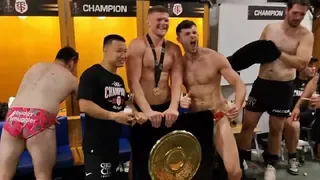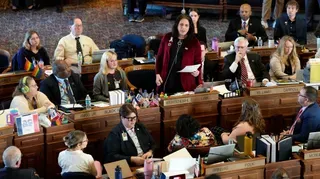September 20, 2012
Murder of Kyra Kruz Highlights High Rates of Transgender Violence
Andrew Clark READ TIME: 4 MIN.
Philadelphia has been shaken this month with the upsetting loss of a prominent transgender community member Kyra Kruz in the Frankford section of the city, one of 11 gender variant people murdered in the U.S. this year. Sadly, the murder is indicative of an overall rise in trans hate crimes, especially in low-income areas.
"Our members across the country are seeing that there is a connection between living in poverty and experiencing violence, particularly for transgender people of color who are being murdered at alarming rates," said National Coalition of Anti-Violence Programs (NCAVP) Programs Coordinator Chai Jindasura.
The 27-year-old Kruz, also known as Kyra Cordova, was found shot in the head in a wooded area in the city's Frankford area at about 5 a.m. on September 3. She had worked for about a year at the Gay and Lesbian Latino AIDS Education Initiative, and was well known in the LGBT community, having designed costumes and choreographed dance routines for Pride events. A candlelight vigil was held for her on September 13 at the William Way Community Center.
2012 has proven to be one of the most violent and harsh years of the last decade for LGBT hate crimes. Nowhere is this more evident than in the trans community, a historically misunderstood and heavily discriminated minority group that too often bears the worst levels of hate crimes.
A recent report from the NCAVP indicated that violent trans crimes are up more than 11 percent from 2011. This is a significant jump and is cause for heightened alarm. While any number of hate crimes must be dealt with firmly, trans crime is not only disproportionate in number of incidences, but also in resolutions.
Current data indicates that despite much higher intensity of violence, transgender people are 45 percent less likely to have their incidents classified as hate crimes by police, and that those from low-income areas are less confident in reporting the incidents. Furthering this neglect, they also are more twice as likely to experience police violence.
"What we do know from our work in communities is that hate violence against transgender people often takes place in public spaces," said Jindasura. "The less people can 'pass' as straight or fit the norm of how men and women are 'supposed to look,' the higher risk they may have of experiencing anti-transgender and anti-gay violence. At the same time, we know that transgender people often also face severe employment and education discrimination which can increase their risk of poverty and vulnerability."
While having general solution-oriented discussions are important, it is the statistics involved that truly bring to light the severity of the current situation. In 2011, the NCAVP documented 2,092 reports of anti-LGBTQ and HIV-related hate violence. This is the highest number of hate violence murders ever recorded by the coalition.
At the highest risk were transwomen, who made up an alarming 40 percent of the 30 reported hate murders in 2011, while representing only 10 percent of total hate violence survivors and victims. These percentages only increase in transgender people of color.
Though these statistics have continued to rise, Jindasura points out that this could potentially just be from an increase in accuracy and proper documentation of the crimes. It is possible that as the public and the media slowly become more educated on transgendered people that police agencies are simply reporting the crimes correctly. But this makes the facts no less problematic. Indeed it actually does much to increase their urgency with the understanding that this is perhaps more of an epidemic than initially thought to be.
Beyond lack of public education and socioeconomic factors, transgendered people also have the unique disadvantage of being one of the least understood and represented in the public arena for LGBT rights while often being the most visible outcasts in society. Though gay people often have the option to stay closeted and "pass" in public, the process of transitioning from one gender to another is not often as simple.
With elaborate and difficult hurdles to pass both privately and publicly, transgendered people encounter the highest risk of public harassment and violence. Jindasura characterized the type of violent response that transgendered people experience as "overkill," an increased severity that goes beyond a more common classification of assault.
"We believe this may be a result of pervasive bias, hatred, and discrimination that can de-humanize transgender people," he said.
While all of this information is important in the struggle to fight off widespread transgender discrimination and hate crimes, it can admittedly do little to ease the pain of the family and friends of those who fall victim, such as the transwoman recently murdered in Philadelphia. But the NCAVP hopes to take this information and ensure that these horrific events become something of the past.
"That's why we are not only calling for prevention and awareness campaigns that challenge transphobia, but also concrete policy changes to protect transgender people from discrimination and address the root causes of poverty and violence," said Jindasura.
Transgender survivors and anyone who has experienced violence, threats or intimidation are encouraged to contact a local NCAVP member for support and to document this violence. Member lists can be accessed at www.ncavp.com as well as the closest anti-violence programs.





